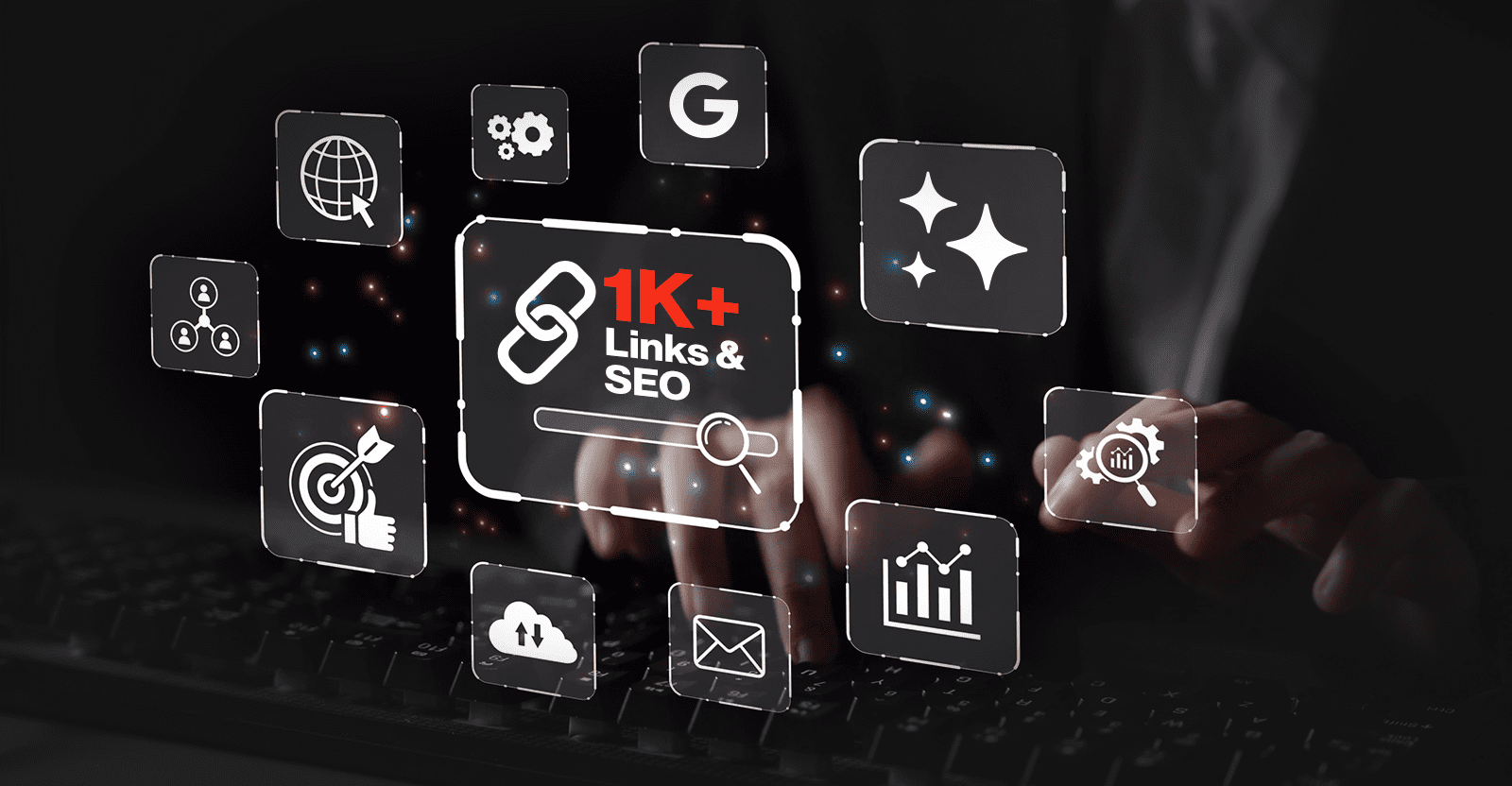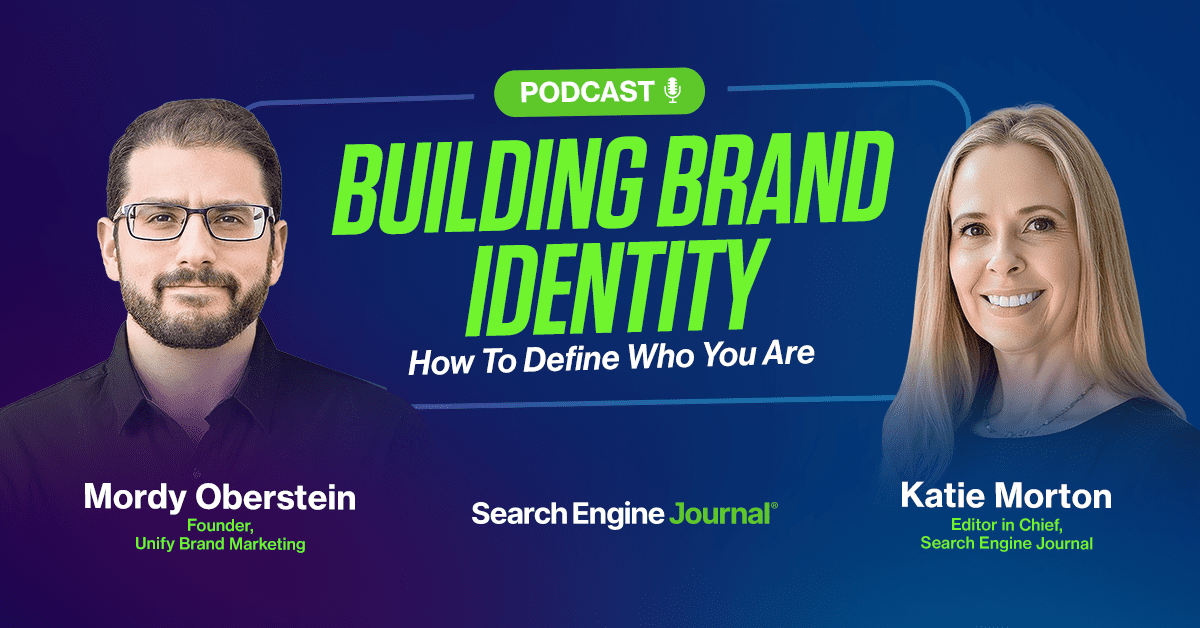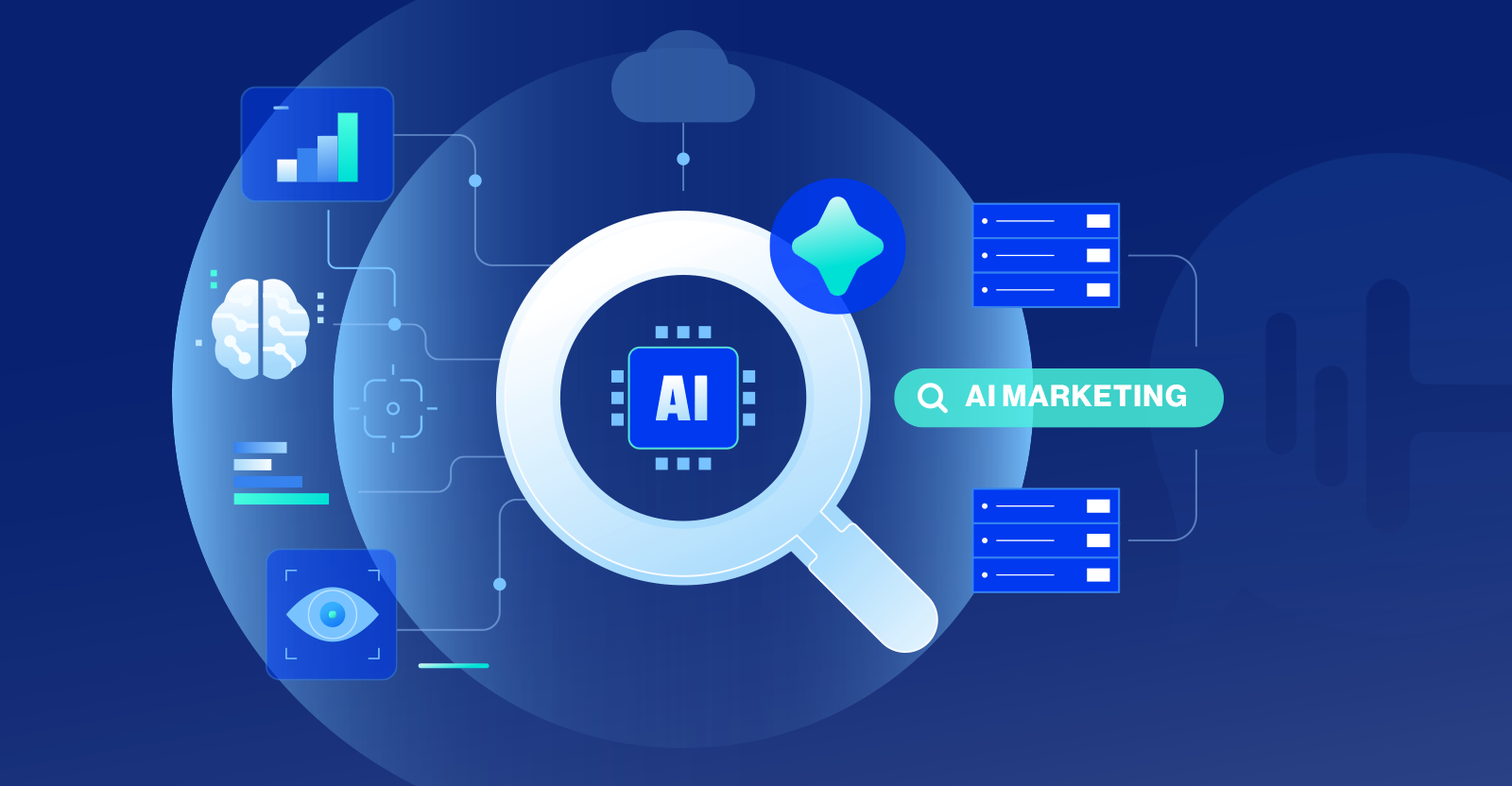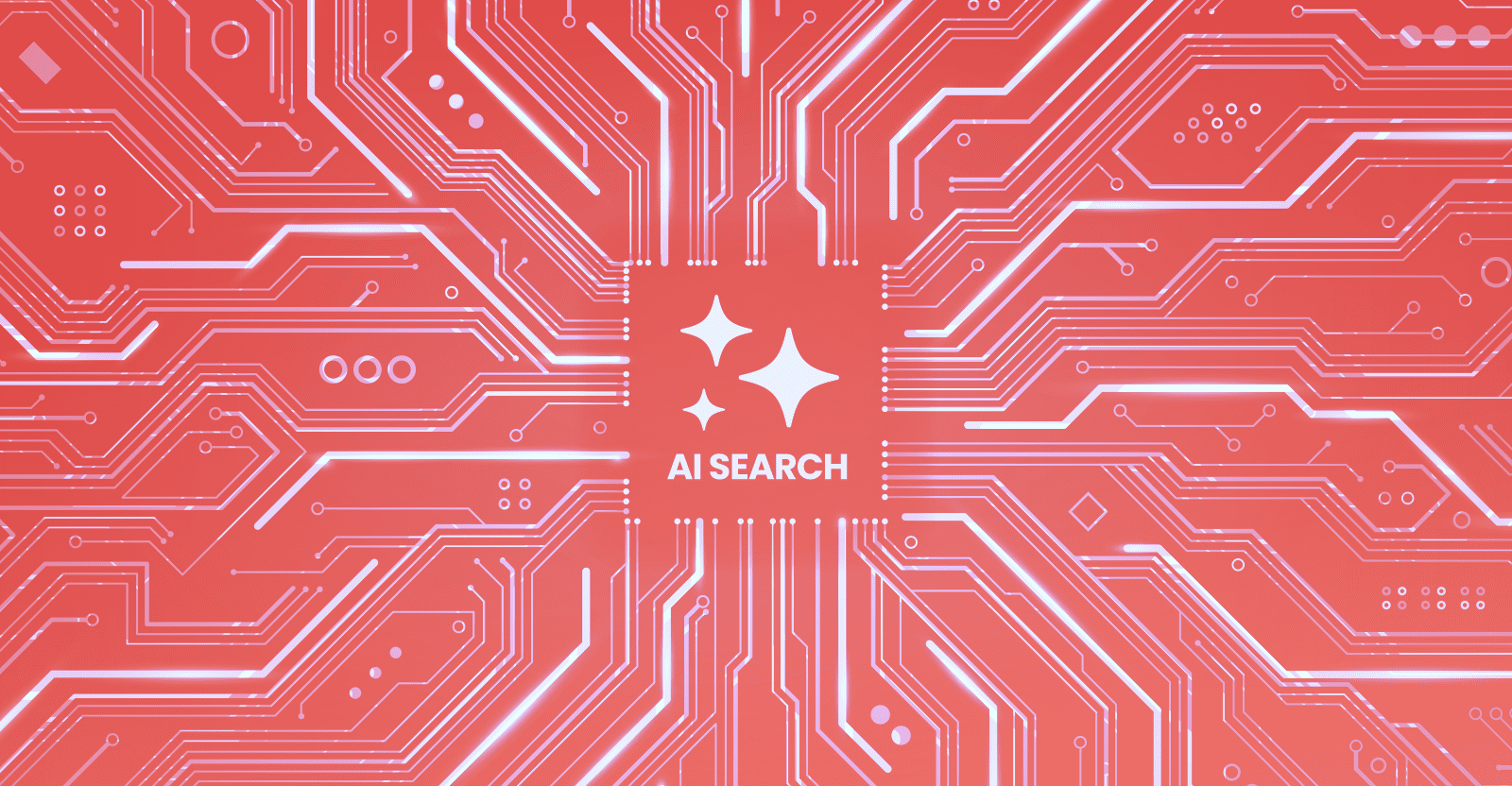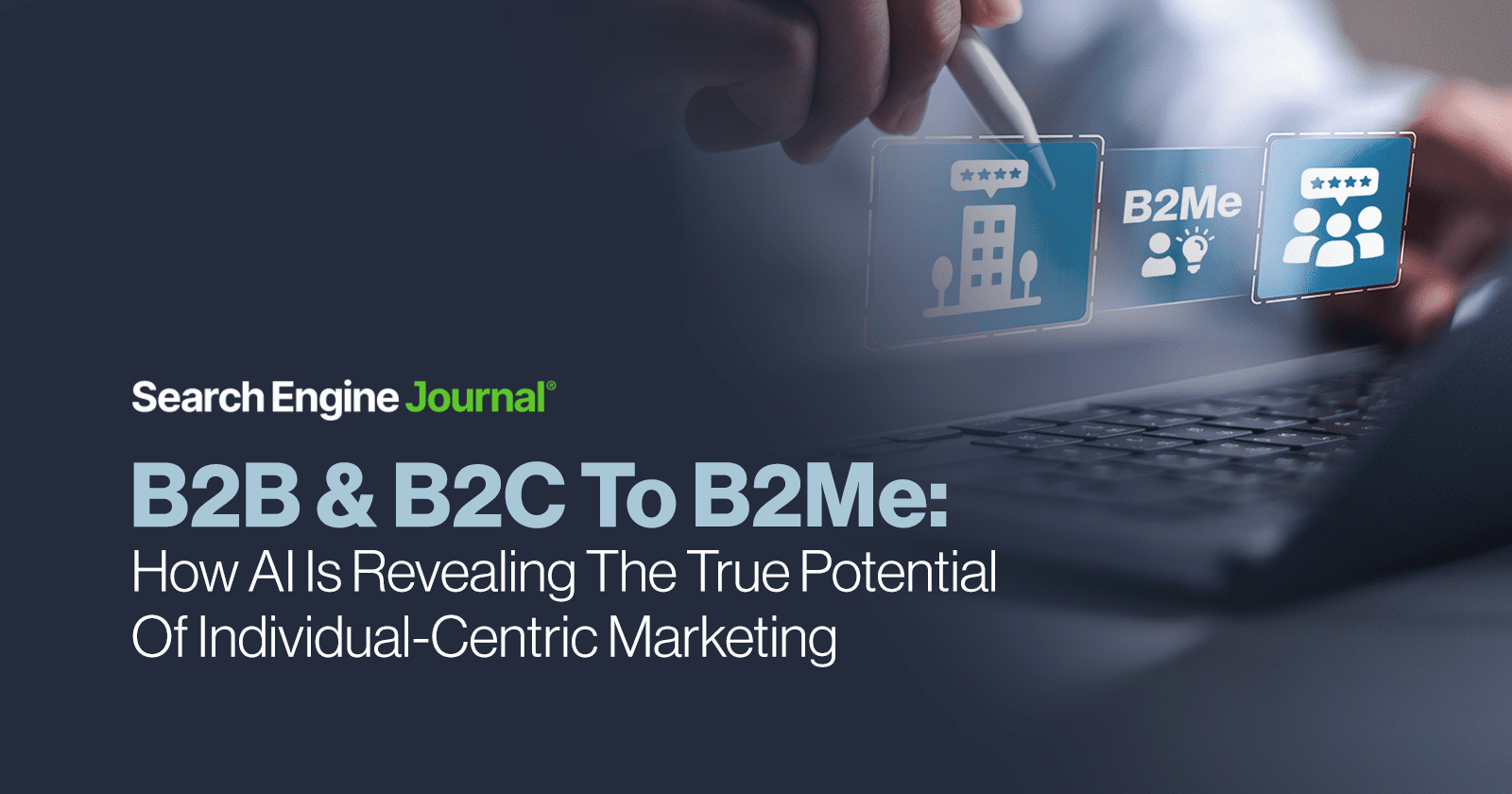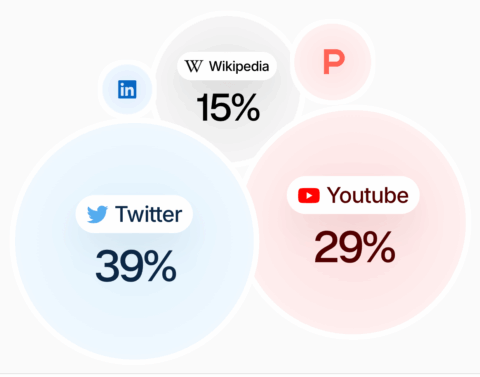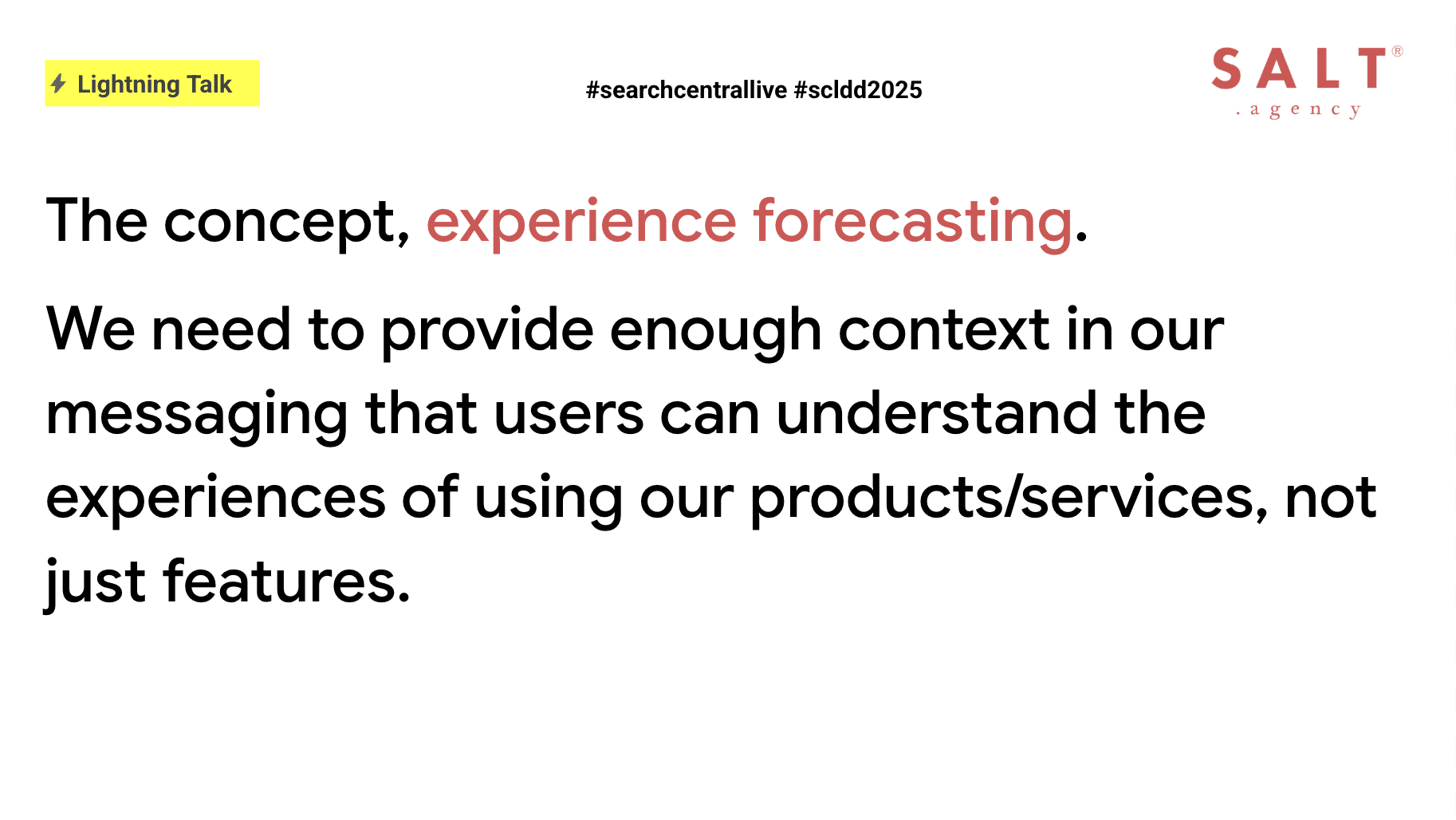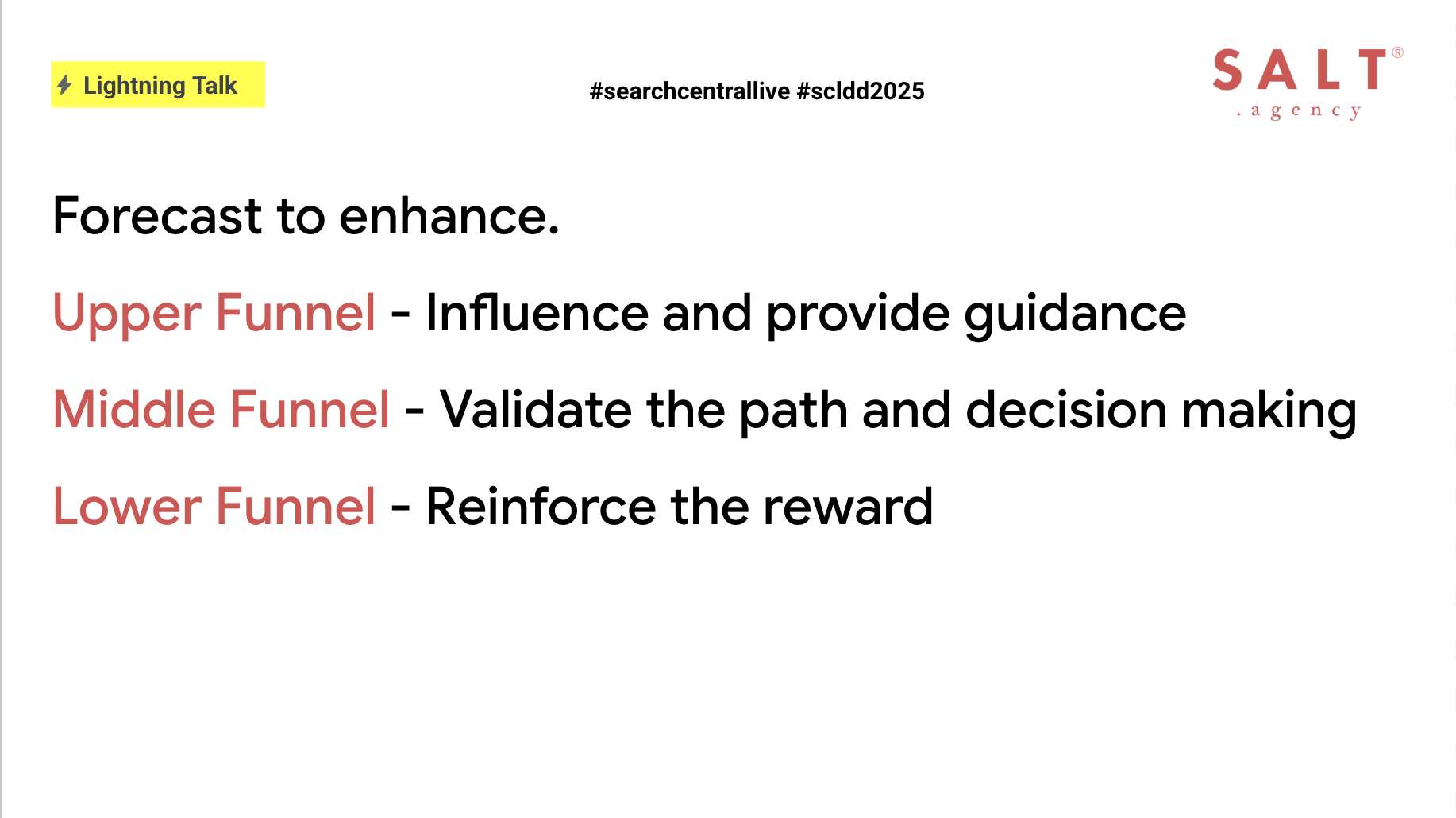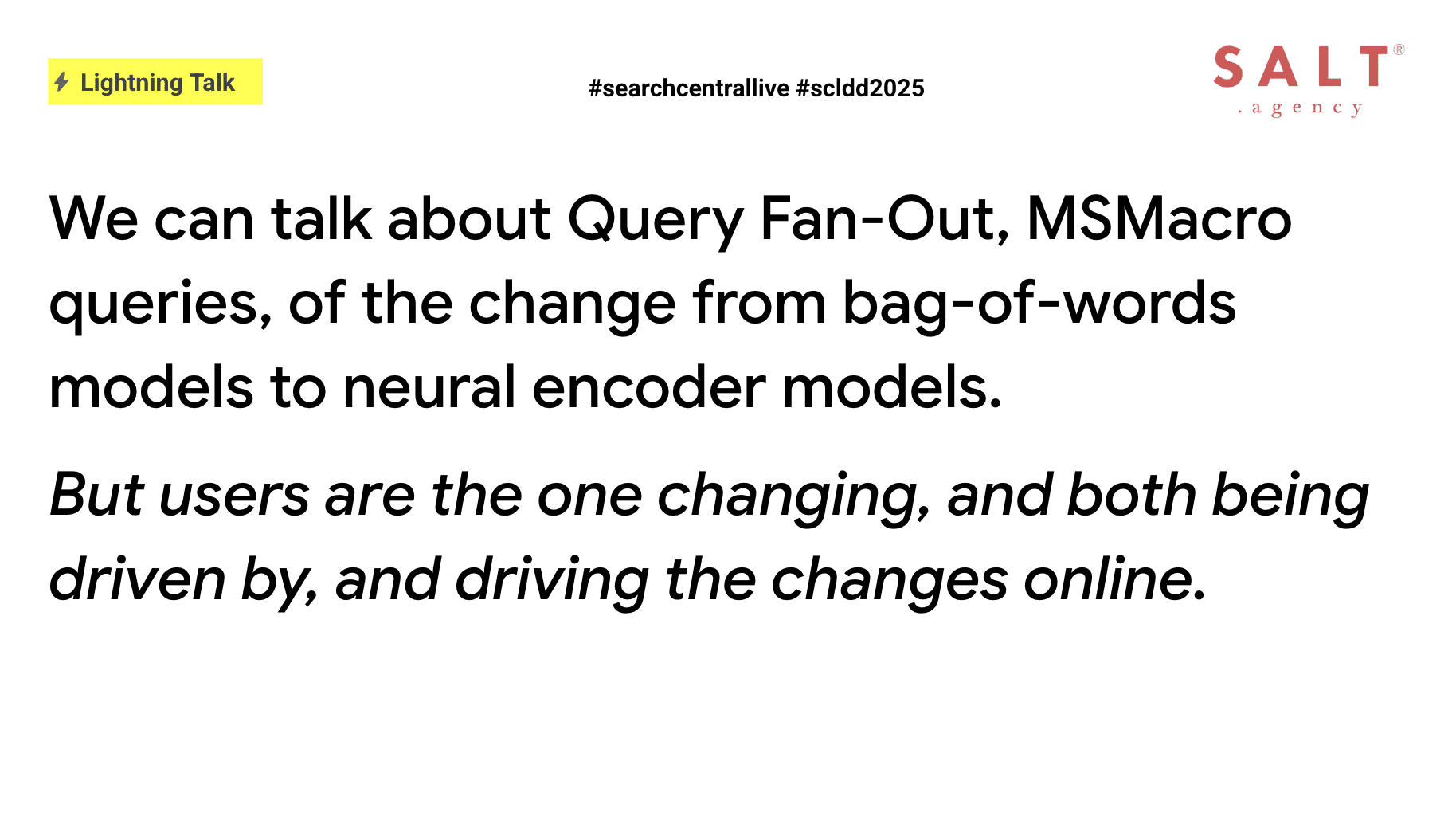Brand identity is the foundation of your business, from the conceptualization of your services and products all the way to marketing.
Before you can create an effective marketing, SEO, content strategy, or even a business strategy, you need to know who you are as a brand. It’s a step many marketers and business leaders overlook, but it’s the one that makes everything else work.
This episode breaks down why identity is the starting point for your business to have impact.
Editor-in-Chief of Search Engine Journal, Katie Morton, sits down with Mordy Oberstein, founder of Unify Brand Marketing, to discuss how to develop a true brand identity so your marketing strategy has something solid to stand on.
Watch the video or read the full transcript below.
Editor’s note: The following transcript has been edited for clarity, brevity, and adherence to our editorial guidelines.
Katie Morton: Hey everybody, it is I, Katie Morton, Editor-in-Chief of Search Engine Journal, and today I’m sitting down with Mordy Oberstein, founder of Unify Brand Marketing. Mordy, talk to me. What’s going on?
Mordy Oberstein: Episode three! It’s a thing now. I can’t believe we’ve made it this far. Counting episodes has become a bit of a challenge, though. We might even be on number four.
Katie: Counting is definitely hard! But let’s dive in.
Why Brand Identity Matters
Mordy: Last time, we talked about brand development and the stages of brand development. The first stage of brand development is developing brand identity. So, for the sake of continuity, which is important for branding, let’s talk about how you develop brand identity this time.
Katie: That sounds fantastic. How does one develop brand identity?
Mordy: Before we get into the “how,” let’s talk about why brand identity is so essential. Identity is the foundation of everything your brand or company does. You can’t create a marketing, SEO, or content strategy without first knowing who you are. Everyone skips this step—but it’s crucial.
Also, identity is the thing that allows your audience to connect to you. There has to be a point of connection for marketing to actually be effective. And people can’t connect unless there’s a “you” to connect with.
How To Build Brand Identity
Mordy: And that, in turn, also gives you a lot of focus where brands generally go off the rails is when they start focusing on the wrong things. It’s usually because of a lack of brand identity. So, how do you actually build identity?
The first thing to understand is that identity is not a fake thing. It’s not some make-believe concept like, “Oh, brand identity, it’s a fabrication.” No, identity is a real, living, breathing thing. And because of that, it has to be tied to what you actually do, what your offering really is. There’s no way to put lipstick on a pig.
The second thing I’ll say, before we dive deeper, is that brand identity has nothing to do with your company culture. If you think, “Oh, our identity is our company culture,” you’re doing it wrong. I know that’s a hot take.
The goal of identity is to create something authentic that your audience can connect with. And it needs to have depth for that connection to happen. To have depth, there has to be almost a therapeutic process that goes on. What you’re basically engaging in therapy for your brand.
Engage In Brand “Therapy”
Mordy: What I do with clients (and what you should do internally with your own team) is tap into who you actually are and what you actually want. It’s a process of asking: Why do you do the things you do?
You need to sit down with your team and have a session where you talk about:
- Why you do what you do.
- How you see your industry and niche.
- How you view your product or service.
- How you see your space and your audience.
- What you want for your audience, not just practically, but meaningfully.
It’s not about what your audience gets in a practical sense. It’s about the outcome for their lives in a meaningful way.
During this process, you need to take notes like a therapist. As you’re having these discussions, ask yourself: What’s landing? What’s meaningful about this? What feels like something to chew on? Listen for the things that resonate – both in what you’re saying and what your team is saying.
From Reflection To Action: Formalizing Your Brand Identity
The next step is to formalize all of that into a pathway to showcase it. You take everything you discussed, all these concepts, ideas, and meaningful points, and try to concretize them into one unified (no pun intended) concept for yourself.
This means prioritizing. You can’t focus on everything. You have to take some of the meaningful things you talked about and say, “Okay, this is secondary.” You need to decide which points will be your primary focus.
Once you have a centralized concept of who you are, what you do, and why it’s meaningful and once it’s really clear to you – the next step is execution.
Because communication about who you are isn’t in the tagline on your homepage. It’s the nonverbal stuff. It’s latent. It’s everything you do. All the content you create, the activities you engage in should all signal and speak to who you are.
Integrating Identity Into Marketing Strategy
Mordy: This is where you start integrating all the work you did in those sessions into your actual marketing strategy.
It’s a three-step process:
- Sit down and have deep discussions to discover what’s meaningful.
- Prioritize: Decide which meaningful things you’re going to focus on.
- Integrate: Unify those concepts into your brand actions and strategies.
Does that make sense?
Katie: So no competitive analysis at this stage?
Mordy: I would encourage you not to look at your competitors yet. All you’re trying to do is figure out…take away the idea of brand for a second, take away the company. If someone asks you who you are, you don’t answer by thinking about your competition.
Instead, you ask yourself: What’s really meaningful to me? What do I really want? What do I want people to know? What do I like to focus on? All those kind of questions and you start pulling that out.
Katie: Exactly. Authenticity should naturally help differentiate you. It should, right?
Mordy: And that’s another thing, by the way, which is a great point that you bring up. It’s technically possible that you could find an identity of who you are that’s really meaningful, that has a layer of depth, that’s not the surface-level nonsense that a lot of brands fall into. It can be super clear to you, and it can be difficult to differentiate. It could be the exact same thing as another brand, but that’s a very, very unlikely thing. It’s a technical possibility, but I don’t think it’s an existential possibility.
Katie: That makes sense. If you think of a brand as an individual human, no two humans are alike. So neither should two brands be alike.
Mordy: Exactly. If you’re doing this exercise correctly, you’ll naturally create differentiation. And if you feel like you’re not, it means you haven’t dug deep enough yet.
Brand Identity Guides Real-World Implications
Katie: Full disclosure: We actually went through this brand identity exercise with Mordy at Search Engine Journal. It was extremely helpful, and like you said, it also trickled into real world actions. It’s helping to inform some of our product strategy and other things we’re planning on doing in the real world. This branding exercise is not just empty calories, so to speak.
Mordy: Thanks for saying that. That’s awesome.
If your marketing team isn’t getting traction and feels stuck, it’s often because you’re not tapped into who you actually are. But once you are, you feel very much not stuck. You get clarity: “Here’s where our product should go. We shouldn’t go that way; we should go this way.”
It’s where you see companies go off the rails with AI, for example. They just jump on every AI thing because they don’t know who they are. They don’t have the ability to say, “That’s not us.” Or, “Yes, we should get into AI, but it should be done in a way that reflects who we are.”
This identity work also gives you focus, traction, and momentum when you’re feeling stuck. We talked about this last time: knowing who you are is very important for figuring out who you’re for.
Katie: Right. That’s a good point. So it can help target your audience as well, who do you want to help? The other thing I found it’s motivating just from a work ethic standpoint, if you feel like you’re burned out or you’re spinning your wheels or you don’t know why you do what you do, it gives you sort of a North star to really connect with other human beings, with your customer, who are you trying to serve and why?
What is that intrinsic motivation that helps you get out of bed in the morning?
Mordy: It’s super meaningful. From a practical point of view, when teams or companies talk about needing an “internal vision,” what they really mean is they need an internal identity that can be communicated across teams. That’s what I feel you’re actually trying to say.
Aligning Brand Identity: A Picture Frame Business Example
Mordy: Let me give you a weird example. Let’s say I make picture frames. That’s my business: I sell picture frames.
If your identity is just, “We’re about making cheap picture frames,” that’s not meaningful. But if you start asking why you’re doing this, you might discover something deeper. Maybe you and your team really value cherishing memories. That’s your motivation. So, your product, the frame, is a way to help people cherish their memories by displaying them.
Half my pictures are still on my phone. They are not cherished. Print them, put them in a nice frame, display them, cherish those memories. But if you say you’re all about cherishing memories and then sell flimsy, garbage frames, that would be a misalignment.
Another company might say, “We want to add artistic flair to your pictures.” Their identity is about art and design. Two totally different companies doing totally different things with their brand identity. And it’s based on who they actually are, and their products should align.
Sometimes you’ll combine concepts. Maybe you believe in cherishing memories, but you also feel that an artistic frame enhances that experience. So, your core concept becomes: “We help you cherish memories by giving them artistic design that highlights how special they are.”
So that would be taking two concepts and unifying them together to create one core concept that speaks of both aspects of who you actually are. You can do five different things with this, it all depends on who you are in reality.
Katie: I can imagine, too, that you could build entire product lines from that concept. Maybe you serve different customer segments, or maybe it’s one customer who wants variety.
Mordy: Your whole product line should be informed by that decision. If you’re saying, “Cherishing the memory means giving it a really fancy frame,” then your products need to align with that. Imagine you bought a Monet…you wouldn’t put it in a cheap poster board frame. You’d give it a beautiful frame that reflects its value. Your memories are paintings; your pictures are memories.
Your products need to align. You’d create product lines of artistic frames to match your identity. If your products don’t reflect who you are, then either that’s not your identity, or you need to change your product to match it.
Brand Identity Drives Motivation
Katie: That makes sense. As a painter, so I can relate to this example. When I don’t know why I’m creating, I stop. The times that I am aligned with this exercise of figuring out who I am and who I’m trying to connect with, and the identity behind why I would be a painter, I’m so much more motivated to show up and paint.
Any time I get lost in the grind of the work week, it often makes me not paint, because I have different identities at different times, as we all do as human beings. Sometimes my work identity will take over. If the painter identity is weak or ill-defined, I can literally go years without painting.
So to bring it back to the concrete reality of what we’re talking about, the same happens in business. It’s so easy to get off track because people have so many priorities shoved at them all the time. So it’s really easy for businesses to become idea generators. If you don’t have those north star KPIs rooted in our brand identity, it’s so easy to go chase shiny things.
Mordy: …they’re all over the place. Businesses ask, “Why should I do this? Shouldn’t I focus on conversions, revenue, traffic?” But defining your identity helps you do that. You’ll target the right people with the right message and avoid wasting time and money on products, marketing, or content that don’t align with who you are.
When you’re confused, you try everything. You waste a ton of time, resources, and money. But if you sit down for a few hours, clarify your identity, you’ll know, “We need to do this, and not that.”
Mordy: Also, identity evolves over time, just like people. Your brand, who you are, why you do what you do, it changes. That’s normal. But it always needs to be clear to you.
People are creatures of meaning. If you can’t attach meaning to what you do, your audience won’t be able to connect or resonate. You’ll face an uphill battle trying to convince people to spend money with you. On top of that, your team won’t have buy-in. You, as the owner or CEO, might be motivated, but your team needs something meaningful to connect with.
That’s why it’s critical to communicate your identity across the entire organization. Don’t stop at the C-suite or the marketing team. Start having real conversations about this with every team member.
Quick Note On ICPs And Personas
Katie: I have one last question for you, Mordy. The idea of the ICP, how much does that factor into this particular step? How would you categorize that part of this discussion in terms of the ICP and the brand identity?
Mordy: That’s a hard question, it’s a whole topic in itself. I don’t like profiling like that. I like intent-based marketing over persona-based marketing.
Katie: Not to open a can of worms late in the discussion, but talk to me briefly about intent-based versus profiling.
Mordy: I’m more interested in why people do things than which person does which thing. Generally, when you’re more intent-focused, you open up more opportunities. But when you’re persona-focused, you sometimes end up with blinders on.
That’s not to say there’s no room for persona-based marketing. There is. But going back to your question about the ICP (kind of a hot take) shouldn’t be part of this process until you’ve figured out who you are.
Should your ICP, your Ideal Customer Profile, influence who you actually are? Does it change who you are? Think of it like going on a date. Should who the other person is influence who you are as a person? That’s not a recipe for success. You are who you are.
Of course, we’re all multifaceted people, but fundamentally, you are who you are. And because of that, you decide who you should engage with, whether that’s Customer X or Customer Y. Not the other way around.
Final Thoughts
Katie: Let me just add one thing. Let’s say someone is flexible as a brand or as a dater. Imagine a scenario where someone has aspirations, whether in business or relationships. Someone who’s an inexperienced business owner who wants to target a high-value customer, but doesn’t yet have the experience to offer real value.
In that case, you have two options. One is to accept where you are, get back down into your league, and serve the customers you’re best equipped to serve right now. The other option is to level up. Get educated. Improve yourself. If you’re aiming for a target that’s currently out of your league, there are steps you can take within reason to grow into that.
But that’s a whole other business development conversation. For the purposes of this branding exercise, it’s about authenticity and being realistic. It’s about knowing where you can truly add value. And at the heart of it, it always comes back to: Who are you? Like you said, it ties back to brand development.
Mordy: To kind of end off with a very simple example, again, if you micro-level this, it all becomes much easier to see. Let’s say there are two groups I want to hang out with. Group A likes baseball games. Group B prefers the ballet or symphony. Both groups seem cool, but I love baseball. That’s my thing. So I should hang out with the baseball crowd.
I’m not a fancy person. I don’t enjoy the symphony. If you do, that’s awesome, more power to you. But it’s not me. I’m not going to force myself into that crowd. Instead, I’ll lean into the baseball group. I’ll amplify that aspect of myself. I’ll get the jersey, the gear to show them I’m part of their group. Because I actually am.
I’m not faking it. I’m just trying to amplify what I actually am to show you that’s who I am. That’s the difference. One is you’re faking it in order to show people like, “Oh, here we go, this is who I am.” Not you at all.
The other way is, this is who I am, and I’m going to try to communicate that to you by all the things I’m going to do. And I might purposely and consciously try to do things or signal to you that “I’m part of your group. I fit in. Love me.”
Katie: That’s amazing. And just from a business standpoint, when it comes to SEO and acquiring customers and traffic, it’s so important to focus on your niche. You’re not going to be all things to all people, especially now when AI is answering all the basic questions.
You need to double down on who you are and speak authentically to your niche. Stop trying to appeal to too many people. The days of the open web firehose of traffic are done. So adjust and adapt.
Mordy: If you’re for everyone, you’re for no one.
Katie: Exactly. Alright, Mordy, we’re at time. Thank you so much for sitting down with me today. I’m looking forward to the next one.
For a free consultation with Mordy, head over to unifybrandmarketing.com.
And we’re at searchenginejournal.com for more content and discussions. Mordy is also a contributor at Search Engine Journal, and any final thoughts?
Mordy: Yeah, come check out the free consultation. And check out the SEJ content.
Katie: Awesome. Until next time. Bye.
Mordy: Bye.
More resources:
Featured Image: Paolo Bobita/Search Engine Journal
